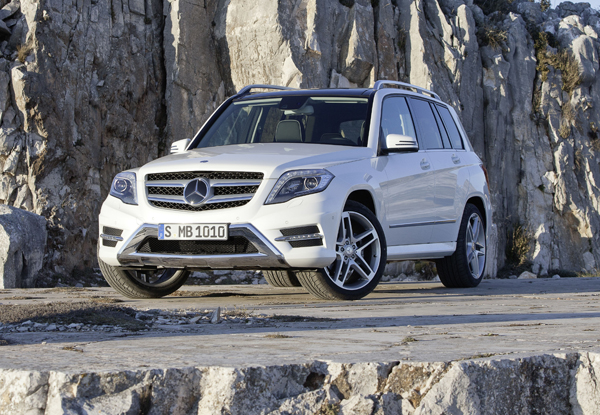 The car has been around for over 100 years, but carmakers can still surprise everyone with new permutations, which sometimes come from combining some fairly random bits. The Mercedes-Benz GLK is a boxy small crossover, so who would ever think of turning it into a coupe? Mercedes itself, apparently, a new report from England’s Car says.
The car has been around for over 100 years, but carmakers can still surprise everyone with new permutations, which sometimes come from combining some fairly random bits. The Mercedes-Benz GLK is a boxy small crossover, so who would ever think of turning it into a coupe? Mercedes itself, apparently, a new report from England’s Car says.
The coupe, called GLC, would be launched with a completely redesigned GLK model line in 2016. Unlike the current GLK, the new model will be less boxy, which makes a coupe version seem less improbable.
Mercedes is probably thinking of building its own version of the Land Rover Range Rover Evoque. The Evoque’s sleek styling looks like nothing else Land Rover has ever built, but the luxury crossover has been a major success for the company.
The Evoque is available in three-door or five-door body styles, and the GLC and GLK will probably be paired the same way.
That means the GLC could end up being a GLK with two fewer doors, although Mercedes could throw in a lower roofline, like rival BMW did to turn an X5 into an X6.
Car says the GLC will also be sporty, to compete against the upcoming Porsche Macan. Mercedes will reportedly equip it with diesel and gasoline four-cylinder engines, displacing 2.0-2.2 liters. If Mercedes really wants to make on Porsche, though, an AMG performance version is a must. That model could get a 4,0-liter, 462 horsepower V8.
Obviously, Mercedes’ 4Matic all-wheel drive system will be available on all models. It will be standard on upper trim levels and an option on the base model.
While a three-door SUV doesn’t exactly fit most people’s idea of a coupe, the GLC could help bring back a dormant segment. There used to be a slew of two-door SUVs, vehicles like the Ford Explorer Sport, Isuzu Amigo, Mitsubishi Raider, and Chevrolet S-10 Blazer.
Practicality eliminated all of them, but luxury car buyers can afford to be impractical. The Evoque has shown that. So maybe the GLC is more of a re-imagination than a completely new idea.
Editors' Recommendations
- 2025 Mercedes-Benz EQS sedan gets new face, bigger battery
- 2024 Mercedes-AMG S63 E Performance first drive review: high-performance plug-in
- Mercedes-Maybach EQS SUV is old-school luxury — electrified
- Mercedes EV charging hubs are coming to North America by the end of the decade
- 2023 Mercedes-Benz EQE SUV preview: The EV lineup grows again


